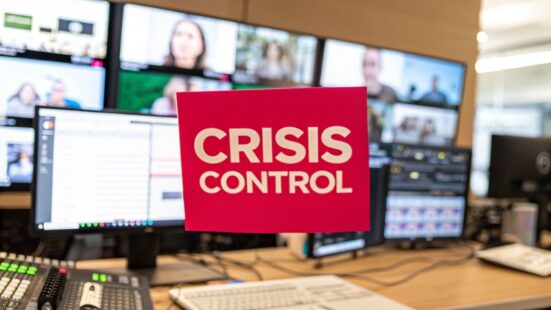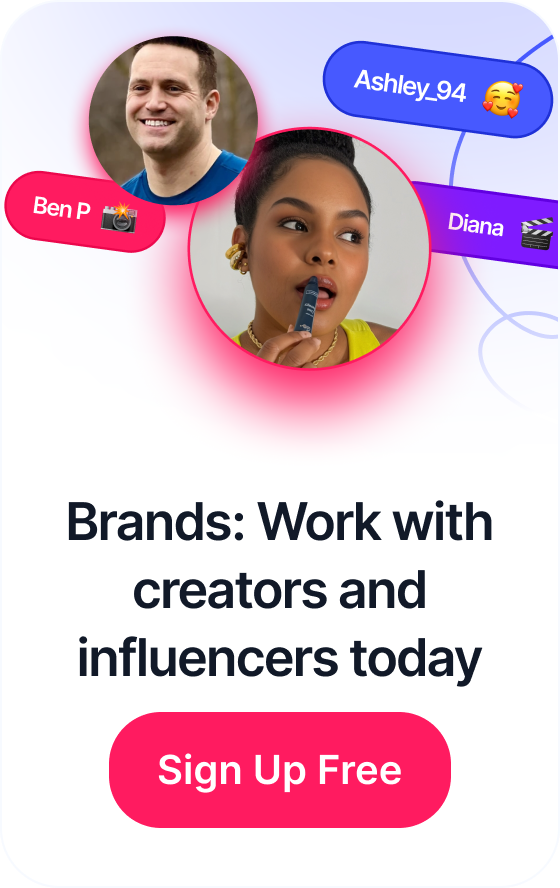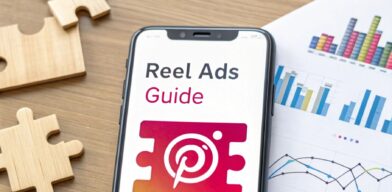 Mastering IG Reel Ads A Complete Guide
Mastering IG Reel Ads A Complete Guide
Forget the old PR rulebook. In today's hyper-connected world, a single viral post can spark a full-blown brand crisis in a matter of minutes. This makes social media crisis management an absolutely non-negotiable skill. This isn't just about damage control anymore; it's a core business function for protecting your reputation.
Table of Contents
Why Your Old Crisis Plan Is Obsolete

If your crisis plan is collecting dust in a binder somewhere, it has already failed. Think about it: traditional tactics were designed for a 24-hour news cycle, not a 24-second viral loop. Information now spreads like wildfire across global networks, and your brand can lose control of the narrative before your team has even gathered in a conference room.
The sheer speed of social media means your reaction time is measured in minutes, not days. A delayed or, even worse, a tone-deaf response creates a vacuum that misinformation and public anger rush to fill. That’s how small issues snowball into massive problems. The scary part? Only 49% of companies even have a formal crisis plan, leaving the majority dangerously exposed to severe reputational and financial damage.
The Modern Framework for Crisis Management
To be effective today, your approach to social media crises has to be built on a proactive, four-pillar framework. It’s less about simple reaction and more about creating a resilient system that’s ready to act decisively when the pressure is on.
Here’s what that looks like in practice:
- Preparation: This is about building your defense before a crisis hits. You need a dedicated response team, clear approval workflows, and a social listening strategy already in place.
- Detection: You have to use the right tools and protocols to spot potential threats early. This is the art of separating isolated customer complaints from the early tremors of a widespread issue.
- Response: When a crisis ignites, you need to execute a swift, authentic, and empathetic response to control the narrative and begin the hard work of rebuilding trust.
- Recovery: After the storm passes, you analyze the event post-mortem. This isn't about pointing fingers; it's about strengthening your processes and turning hard-won lessons into genuine brand improvements.
This modern approach acknowledges a tough reality: you can't control the conversation, but you can absolutely influence it with speed and sincerity.
The market is already reflecting this massive shift. The global social media crisis management services market has blown past USD 1.88 billion and is projected to grow at a CAGR of around 21%. This growth is being fueled by new AI-powered tools for real-time monitoring and a crucial industry-wide pivot from reactive fixes to proactive planning. If you want to dive deeper, you can discover more insights about this growing market and its key trends.
A crisis doesn't create character, it reveals it. How your brand responds under pressure is the most authentic marketing you'll ever do. It shows customers, stakeholders, and competitors what your values truly are when it's inconvenient to have them.
This guide is designed to be an actionable playbook built for the speed of social media. We're giving you a real-world toolkit to protect your brand effectively, no matter what comes your way.
Building Your Pre-Crisis Defense System
The best way to handle a social media crisis isn't to react when the negative comments start flooding in. It's to prepare long before anything ever goes wrong.
Think of it like building a fire department for your brand. You don't wait for a fire to start before you buy a truck and hire firefighters. You build the infrastructure so you're ready to act the second the alarm sounds. This proactive foundation is what separates brands that barely survive a crisis from those that emerge stronger and more trusted.
It’s about creating a system that allows your team to respond with speed and clarity when every second counts.
Assemble Your Core Crisis Team
Your first move is to designate a core crisis response team. This is not a job for a lone social media manager. A real crisis touches multiple parts of your business, and your team needs to reflect that.
Keep the group small enough to be agile but diverse enough to have all the right expertise on hand. This usually means pulling in key decision-makers from a few different departments.
- Social Media/Marketing: These are your front-line communicators who will manage the public-facing response.
- Customer Support: They have a direct line to customer sentiment and are invaluable for addressing individual concerns.
- Legal/Compliance: Absolutely essential for reviewing any public statement to make sure you aren't creating bigger problems down the road.
- Public Relations: These folks are experts in managing the brand’s narrative and dealing with the media.
- Executive Leadership: You need a senior leader who has the authority to approve major decisions fast, no questions asked.
Everyone on this team needs a crystal-clear role. Who is the designated spokesperson? Who drafts the initial statements? Who gives the final sign-off? Answering these questions now prevents chaotic, time-wasting debates during a live crisis.
Streamline Your Approval Workflows
In a crisis, speed is everything. A bureaucratic approval process that takes hours to get a single tweet signed off is a recipe for disaster. You need to map out an emergency approval workflow that bypasses the standard, slower chains of command.
For example, a low-level issue might only need a sign-off from the social media lead. But a full-blown crisis should automatically escalate to the executive and legal members of your team. The key is to have these pathways established and understood by everyone involved before you ever need them.
A crisis plan on paper is useless if it hasn't been pressure-tested. Run simulations with your team. Throw unexpected scenarios at them and see how the workflow holds up. This practice is what builds the muscle memory needed for a real event.
This also means getting your communication channels in order. Set up a dedicated, private channel—like a locked Slack channel or a group chat—for the crisis team to communicate in real-time. The last thing you want is critical information getting lost in crowded email inboxes.
Develop Pre-Approved Message Templates
You can’t predict the exact nature of a future crisis, but you can definitely anticipate the types of crises your brand might face. Based on that, you can create pre-approved message templates and holding statements.
These aren't meant to be rigid, copy-and-paste responses. Think of them as legally vetted starting points that your team can quickly adapt to the specific situation. Having these ready can save an unbelievable amount of time when the pressure is on.
Common scenarios you should plan for include:
- Service Outage or Technical Failure: A simple template for acknowledging the issue and providing updates.
- Product Recall or Safety Concern: A message expressing concern and outlining the immediate steps you're taking.
- Negative Employee or Executive Behavior: A statement that affirms your company values and separates the brand from the behavior.
- Misinformation or False Rumors: A framework for fact-checking and correcting the record clearly and calmly.
A foundational element in building this robust defense system involves implementing comprehensive and effective social media management strategies that keep your daily communications consistent. This consistency makes it easier to maintain your brand voice, even under pressure.
Implement Robust Social Listening
Finally, your pre-crisis defense needs a powerful early-warning system. This is where social listening becomes indispensable. It’s about more than just tracking mentions; it's about actively monitoring conversations across social platforms for your brand, products, competitors, and key industry terms.
Modern listening tools go way beyond simple mention tracking. They can analyze sentiment, detect unusual spikes in negative comments, and identify influential accounts driving the conversation. This allows you to catch a potential issue when it’s just a spark, not an inferno.
And speaking of consistency, it's crucial that your messaging always aligns with your brand's identity, so your audience knows what to expect. If you need help defining your brand’s voice, our guide on how to create brand guidelines is a fantastic resource for establishing that all-important foundation.
By setting up alerts for sudden drops in sentiment or a rapid increase in mention volume, you empower your team to be proactive. They can assess a brewing situation and potentially de-escalate it before it ever explodes into a full-blown crisis.
How to Spot a Real Threat from Online Noise
Not every negative comment is a five-alarm fire. Most of them aren't. The real skill in modern social media crisis management is learning to tell the difference between an isolated customer complaint and the first tremors of a genuine, brand-damaging earthquake.
Get this wrong, and you'll either burn out your team by overreacting to minor gripes or, far worse, sleepwalk into a disaster that was preventable.
The trick is to look past the raw number of negative mentions and start digging into the context and velocity behind them. A single angry tweet from a customer with 50 followers? That's a customer service ticket. The exact same comment from an industry influencer with 500,000 followers? That’s the start of a very bad day.
Key Metrics That Signal a Real Crisis
To separate the signal from the noise, you need a solid early-warning system built on a few key metrics. These are the indicators that tell you how far and how fast the negativity might spread.
When you see negative feedback bubbling up, your team needs to immediately zero in on these factors:
- Velocity of Mentions: A sudden, sharp spike in negative mentions is the biggest red flag you can get. If negative comments jump by 200% in an hour, something is seriously wrong.
- Influencer Involvement: Who is talking? Check the follower counts and authority of the accounts driving the conversation. A single post from a high-profile account can pour gasoline on a fire.
- Sentiment Shift: Keep an eye on your overall brand sentiment. A small dip is business as usual. A sudden crash from 80% positive to 40% negative in a few hours means a specific issue has captured the public's attention.
- Cross-Platform Activity: Is the conversation isolated to X (formerly Twitter), or is it bleeding over to Instagram, TikTok, and Facebook? A problem that jumps platforms has a much higher chance of going mainstream.
This is where social listening tools come in. They turn raw data into a clear picture of what's happening.
When hunting for the right tool, you'll want something that gives you a dashboard with real-time alerts and clear visualizations. Here's a quick comparison of some of the top players in the space.
Comparison of Top Social Listening Tools for Crisis Detection
This table compares key features of leading social listening platforms that are essential for effective social media crisis management, focusing on real-time alerts, sentiment analysis, and influencer tracking.
| Tool | Key Feature for Crisis Management | Best For | Pricing Model |
|---|---|---|---|
| Brand24 | Real-time alerts and a user-friendly "Mention Analytics" dashboard that visualizes spikes. | Small to mid-sized businesses needing an affordable, powerful monitoring solution. | Subscription-based, starting with a free trial. |
| Sprout Social | Integrated listening, publishing, and engagement tools in one platform. | Teams that want a unified social media management suite, not just a standalone listening tool. | Subscription-based, tiered by features and users. |
| Talkwalker | Advanced AI-powered sentiment analysis and image recognition. | Large enterprises needing deep, global insights across multiple media types. | Custom enterprise pricing. |
| Meltwater | Comprehensive media intelligence that covers social media, news, and podcasts. | PR and communications teams who need to track a story across all media channels. | Custom enterprise pricing. |
Choosing the right platform depends on your budget and the scale of your operations, but having one is non-negotiable. You can't afford to be caught off guard.
A digital dashboard like the one below is crucial for an effective early-warning system.
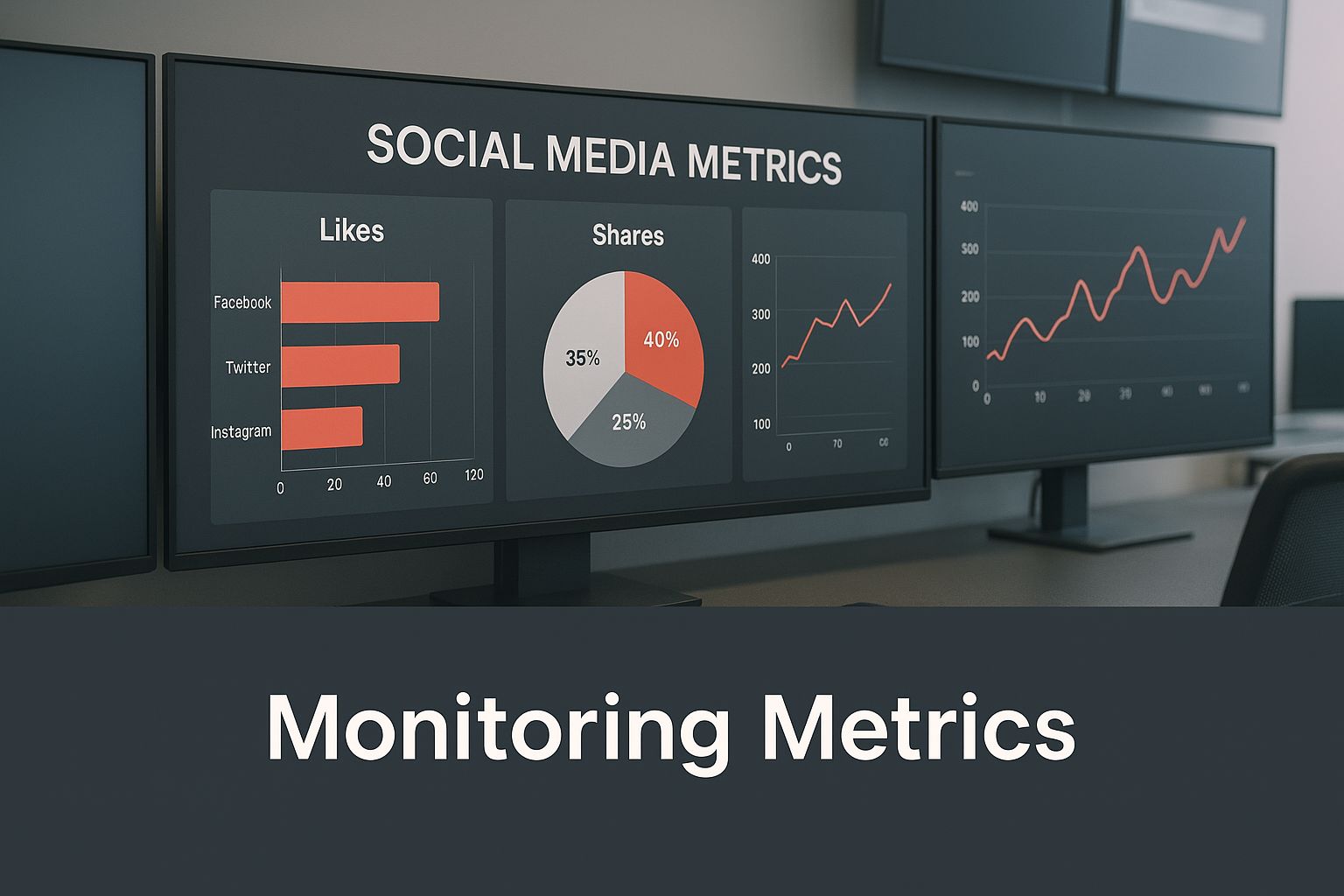
Visualizing data this way helps your team instantly see what matters—a sudden sentiment nosedive or a huge spike in chatter—turning a flood of data into a clear call to action.
A Simple Crisis Classification System
Once you have the data, you need to classify the threat. This is all about matching the response to the size of the problem so you don't call in the cavalry for a paper cut.
The goal isn't to silence every negative voice—that's impossible. The goal is to have a system that tells you exactly when to escalate from routine customer service to a full-scale crisis response.
Here’s a simple framework you can steal and adapt:
- Level 1 (Minor): A few isolated negative comments with low engagement. This is handled by your frontline social media or customer support team with direct, one-on-one replies.
- Level 2 (Moderate): A steady drumbeat of negative sentiment, maybe pushed by a couple of influential accounts or a product issue affecting a specific group. Time to loop in the core crisis team for a coordinated public statement.
- Level 3 (Severe): A full-blown viral issue. It’s getting media attention, your negative mentions are skyrocketing, and brand sentiment has fallen off a cliff. This is an all-hands-on-deck emergency that needs executive buy-in and fast, transparent communication.
Keeping tabs on these metrics isn't just for putting out fires; it's a vital part of monitoring your overall brand health. If you want to get a better handle on your baseline, exploring different brand awareness KPIs will give you a much clearer picture of your standing online. When you know what "normal" looks like, you'll be much quicker to spot the deviations that signal real trouble.
Responding with Speed and Authenticity
Once you’ve confirmed a crisis is real, the clock is officially ticking. Every second counts. I’ve seen it time and time again—the moves you make in that first hour can literally define the entire outcome. This is where your crisis plan stops being a document and starts being your playbook, demanding a tricky mix of speed, honesty, and genuine empathy.
When your brand is under a microscope, silence is deadly. It’s almost always interpreted as guilt or, even worse, incompetence. The public, your customers, and the media will happily fill that void with their own stories, which are usually far more damaging than the truth. Your first job is to grab the steering wheel and become the single most reliable source of information.
Crafting the Critical First Response
That initial public statement? It sets the tone for everything that comes next. This is absolutely not the time for corporate jargon or getting defensive. To make sure your message lands right, you need to know your audience inside and out. If you don't know how to research target audience for real results, you'll struggle to speak their language and address what they actually care about.
A solid first response always has a few key ingredients:
- Acknowledge the Problem: Get straight to the point. Show you're aware of the situation. Don't dance around it or try to downplay its significance. A simple, "We're aware of the issue regarding X and are actively investigating," can buy you crucial time.
- Show You Care: Empathy isn't optional. You have to express sincere concern for anyone affected. Using phrases like, "We understand this is frustrating, and we are deeply sorry for the impact this has had," shows there are real humans behind your logo.
- Explain Immediate Actions: Tell people what you're doing right now. This isn't about long-term fixes yet; it’s about showing you're taking action and not just sitting on your hands.
- Promise More Information: Let everyone know when and where to expect the next update. This manages expectations and establishes your channels as the go-to source for facts, which is your best defense against misinformation.
This first message needs to get approved with lightning speed. A pre-defined approval chain is non-negotiable here. If you need help building one, getting a handle on a good content approval process can give you a ready-to-go framework for getting messages out the door quickly and accurately.
Choosing the Right Channels and Hitting Pause
Where you post is just as important as what you say. Your response has to show up first on the platform where the crisis is blowing up. If the fire is on X (formerly Twitter), your first statement belongs there. After that, push the same message across all your other relevant channels to make sure it's seen.
Your response should live where the conversation is happening. Don't make people hunt for your side of the story—bring it directly to them with clarity and confidence.
Now for one of the most critical steps people always seem to forget: pause all scheduled marketing content immediately. Nothing screams "tone-deaf" louder than a cheerful, automated promo post popping up in the middle of a public meltdown. It instantly tells the world your teams aren't talking to each other, and it absolutely obliterates trust when you need it most.
A Real-World Example of Swift Action
Remember when Target had that massive data breach, exposing millions of customer credit card details? The importance of speed and transparency was on full display.
Within hours, Target’s CEO was in a public video posted on their social channels. He expressed regret and laid out exactly what they were doing, like offering free identity protection services and setting up direct lines of communication for customers. That quick, authentic response did a lot to control the damage in a situation that could have been much, much worse.
By acting decisively and communicating openly, your team can get through that initial wave of chaos. This first phase is all about stabilizing, showing leadership, and setting the stage for the recovery that’s to come.
Turning Crisis Recovery into Brand Opportunity
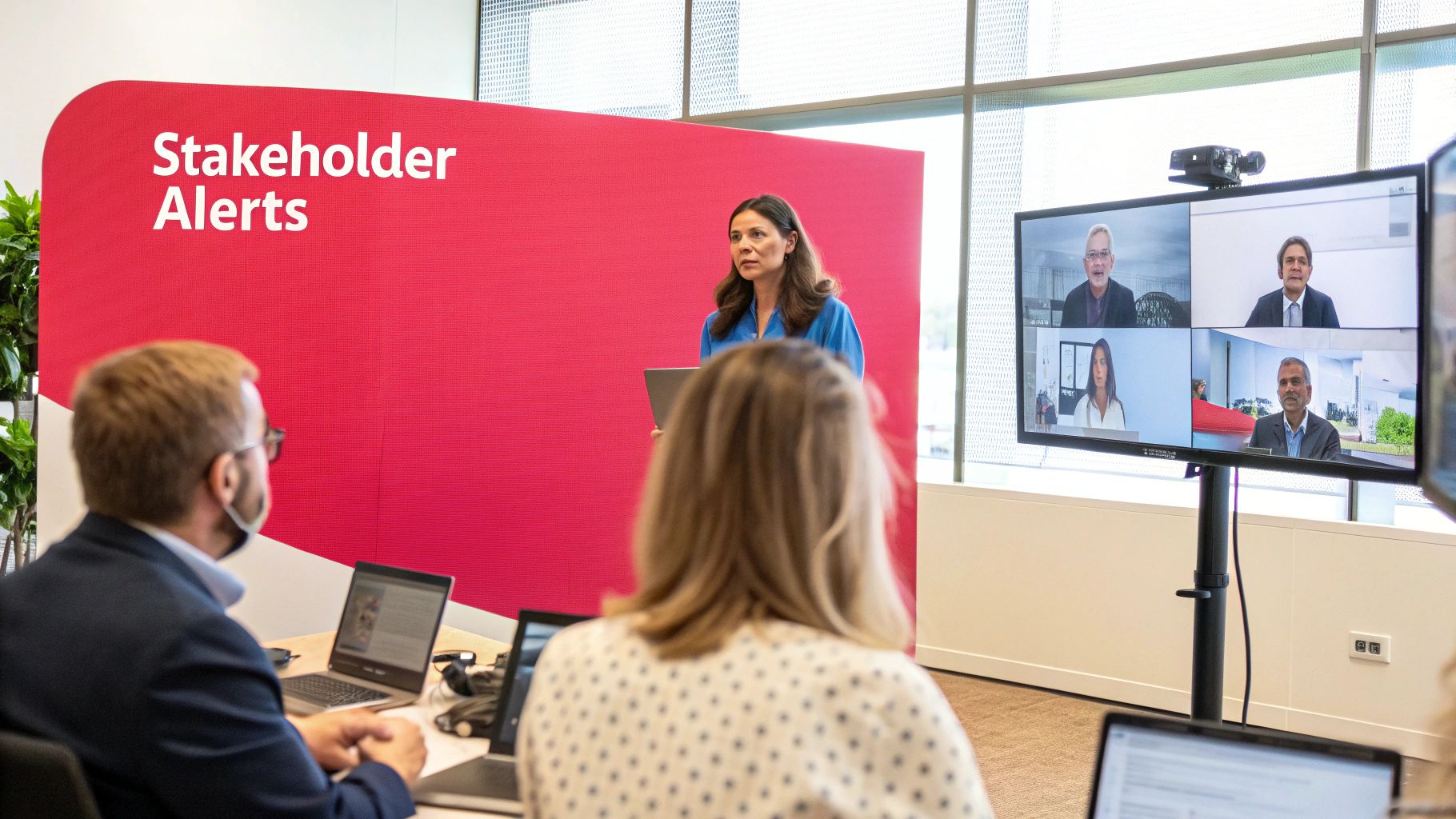
Getting through a social media crisis isn't the finish line. Honestly, it’s not even close. The real work—and the hidden opportunity—starts the moment the chaos dies down. This is your chance to turn a massive headache into a catalyst for growth, strengthening your brand from the inside out.
The goal isn’t just to get back to "normal." After all, "normal" is what got you into this mess. The real focus should be on coming out the other side as a more resilient, transparent, and trusted company. It all starts with a brutally honest, no-blame post-mortem.
Conducting a Thorough Post-Mortem Analysis
Once the immediate fire is out, get your core crisis team in a room for a debrief. This isn't about pointing fingers. The goal is to figure out what broke, what worked, and where the systemic weaknesses are. Every crisis, no matter how painful, is packed with lessons if you're willing to look for them.
Structure your analysis around a few key questions:
- What was the real trigger? Go deeper than the surface-level symptom. Was it a flawed product, a clumsy communication mistake, or something totally out of your control?
- How fast did we catch it? Did our social listening tools give us a heads-up, or did we get blindsided by a flood of angry mentions?
- How did our plan hold up? Did our crisis plan actually work under pressure? Were the pre-approved messages useful, or did they sound robotic? Was our approval process nimble enough?
- How did the team do? Who were the heroes? Where did communication fall apart? It's crucial to identify both the rockstars and the bottlenecks in your workflow.
This kind of honest assessment is what lays the groundwork for turning a negative event into a positive operational shift. You're not just cleaning up a mess; you're reinforcing your defenses for the next time.
Measuring the True Impact of the Crisis
To really understand the recovery journey ahead, you have to look beyond the vanity metrics like mention counts. The real story is in the data that shows how people feel about you now.
Start tracking these key recovery indicators as soon as the crisis peaks:
- Sentiment Trendlines: Look at the ratio of positive to negative mentions. A good recovery will show a slow but steady climb back to your pre-crisis sentiment baseline.
- Brand Mention Volume: After that initial spike of negativity, does your mention volume return to normal levels? Or does it fall off a cliff? A sudden drop can mean people have just given up on you and disengaged completely.
- Direct Customer Feedback: What are people saying in your DMs, support tickets, and surveys? This is a goldmine for understanding their real, unfiltered frustrations.
Digging into these metrics gives you a clear picture of the reputational damage and helps you build a recovery plan that actually addresses what your audience cares about.
Rebuilding Trust with Transparency and Action
Trust is like glass. Once it's broken during a crisis, simply saying "sorry" isn't enough to piece it back together. Rebuilding it demands a visible, tangible commitment to change. Your audience needs to see that you've not only heard them but are taking real steps to make sure it never happens again.
And the stakes are high. Data shows that 43% of shoppers worldwide will boycott a brand after they've handled a crisis poorly. On the flip side, brands that acknowledge a problem within the first two hours can see a massive reduction in boycotts. One company’s quick, clear response led to a 61% reduction in boycott threats. Learn more about the impact of crisis response on consumer behavior.
To win back that trust, your follow-up needs to be proactive and painfully transparent.
The single biggest mistake brands make in recovery is going silent. They weather the storm and then pretend it never happened. True recovery means continuing the conversation and showing, not just telling, your audience how you’ve changed for the better.
Share updates based on what you learned in your post-mortem. Write a blog post detailing your new internal review process. Film a video showcasing improved product safety measures. Make a public commitment to better training for your team. Every action proves you took the crisis seriously, turning a moment of weakness into a powerful statement about your brand’s integrity.
Common Questions About Social Media Crisis Management
Even with the best playbook, a real-world crisis will always throw you a curveball. I’ve seen seasoned pros get stuck on tricky situations that just don't have a textbook answer. Let's dig into some of the most common questions that pop up when things get heated.
These are the moments where your gut instinct, backed by a deep understanding of your brand’s values, becomes your most critical asset. The answers aren't always black and white, but these insights should help you make the right call when the pressure is on.
When Should We Respond Publicly Versus Privately?
Knowing when to address something in the open or slide into the DMs is a huge judgment call. There’s no single right answer—it all comes down to the scope and nature of the problem.
- Go Private for Individual Issues: If the issue is with a single customer, like a messed-up order or a one-off bad experience, your best bet is to acknowledge their comment publicly and then immediately ask them to move to a private channel. This shows everyone you’re on it without airing out personal details for the world to see.
- Go Public for Widespread Problems: If you’re dealing with a site-wide outage, a product recall, or anything that affects a big chunk of your audience, you have to say something publicly. A clear, public statement becomes the official source of truth and stops rumors from spiraling out of control.
Here’s a good rule of thumb I’ve always used: solve individual problems privately, but acknowledge systemic problems publicly. If you try to handle a widespread issue with a bunch of one-off DMs, you'll just look like you're hiding something.
The goal is to show you're responsive to the individual and accountable to your community. Balancing public and private communication sends a strong signal about your brand's commitment to both transparency and customer care.
How Do We Manage Internal Team Stress?
Let's be real: a social media crisis is incredibly stressful for the team in the trenches. They’re swimming in negativity and feeling pressure from every direction. Looking after their well-being isn't just a "nice to do"—it's absolutely essential if you want a clear-headed, effective response.
You need a plan for this before a crisis ever happens.
- Set Up Rotational Shifts: Don't let one or two people carry the weight 24/7. That's a recipe for burnout. Have a clear schedule for shifts, especially if the crisis bleeds into nights or weekends.
- Create a Safe Internal Channel: Set up a private Slack or Teams channel where the team can vent, share tough comments, and support each other. This gives them an outlet and separates their personal reactions from their professional responses.
- Show Clear Leadership Support: Your team needs to know that leadership has their back. Simple check-ins from a senior leader can do wonders for morale, reinforcing that their hard work is valued.
Remember this: 72% of consumers say they'll stick with a brand that addresses a crisis quickly and sincerely. Reminding your team that their effort is what saves long-term customer relationships can make those tough moments feel a lot more meaningful.
What If an Executive Is the Source of the Crisis?
This is the big one. When a senior leader is the cause of the crisis—maybe from a thoughtless post, a leaked email, or a controversial interview—the stakes are instantly sky-high. The company's response has to be fast, decisive, and it must clearly separate the brand's values from the individual's actions.
Your crisis plan needs a specific protocol just for this scenario. While your core crisis team will manage the response, the official statement has to come from a higher authority, like the Board of Directors or another C-suite leader. The message must show accountability and reaffirm the organization's core principles to everyone, both inside and outside the company. It’s a moment that truly tests a brand’s integrity.
At JoinBrands, we know that managing your social presence is more than a full-time job. Our platform connects you with over 250,000 creators to produce the kind of authentic UGC that builds trust and keeps your community engaged, even when things are quiet. Discover how our network of creators can support your brand at https://joinbrands.com.
